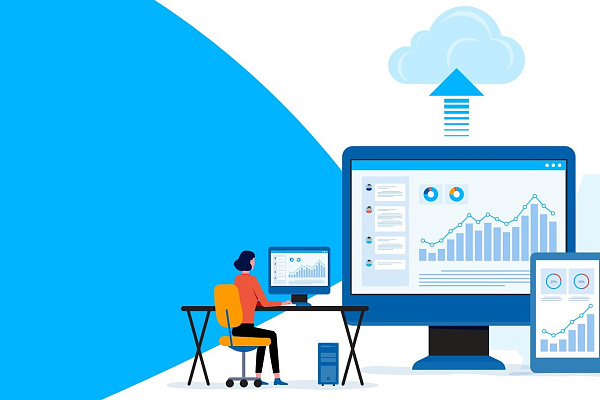When we speak about server power, we mean the installed processor (or processors). However, there is another class of servers, that can significantly improve performance – GPU servers. Originally, they were created for rendering graphics, but today GPUs are used for dealing with high-performance computing tasks. Such servers significantly speed up the parallel processing of requests.
In this article, we will discuss how switching to GPU servers for certain tasks can benefit your business.
What is a GPU server?
CPUs are designed for general-purpose computing. They are the brains of a computer and are perfect for running applications, such as a web client, an e-mail server, etc. Tasks that are more complex require specialized hardware that is faster than a CPU: graphics processing units (GPUs). They are built differently from CPUs.
GPUs have slower cores than CPUs, but they can have thousands of cores running in parallel. As a result, some mathematical operations can run faster on GPUs than on CPUs. GPU accelerated servers are servers equipped with graphics cards. Using the offloading process, the CPU can pass certain tasks to the GPUs, increasing performance. Besides the faster speed, the performance requires less power, which helps reduce heat and power consumption.
Graphics processors also have a slightly different architecture, which is aimed at the task of processing large amounts of data. Video cards in server and system units may look similar, but they are technically different.
Nvidia for server hardware has a special GPU line – TESLA and QUADRO.
QUADRO GPU is designed for Machine Learning and video analytics, without a limitation in the number of input video streams. TESLA GPUs support virtualization, which allows for even more complex tasks.
What is the GPU used for
According to Nvidia, GPU computing is the use of a graphics processing unit together with a CPU to accelerate scientific, analytics, engineering, consumer, and enterprise applications. Let’s take a closer look at GPU benefits for business and their application scenarios.
3D rendering. When used in a CPU-only application, the processing is slow because of linear request processing. GPUs accelerated server increases the performance since they simultaneously process and compute large blocks of data. When repetitive computational tasks are offloaded from the CPU, it is freed up to process sequential tasks.
Speed acceleration: The GPU consists of multiple cores and can simultaneously process hundreds of threads, accelerating the application up to ten times faster than a CPU-only application. To reduce memory access latency, the CPU uses cache, but it takes up a lot of space on the chip. The GPU increases its bandwidth due to the cache. While the CPU waits for RAM to become available to process a thread, the GPU will switch to another thread ready for processing, thereby reducing latency and providing faster results.
Big Data analytics. Business intelligence applications that offer massively parallel computing work more efficiently with GPU acceleration. GPU-based analytics provides support for real-time interactive visualization of data sets, enabling deeper insights, and predictive results with fast speed and accuracy.
VDI solutions with high-performance GPUs. NVIDIA GRID is a powerful tool for delivering superior graphics performance when multiple users share a GPU. GPU hardware acceleration is shared across virtual desktops, offering a best-in-class remote user experience. Employees can securely work from anywhere with access to the same features as when working in the office.
GPU cloud server
Even though GPUs are designed for rendering, they are more than that. Cloud GPU servers have come to be used for processing large data sets – many companies choose such servers when working with Big Data and Artificial Intelligence, 3D modeling, and cryptography.
At Cloud4U, we only offer the market-leading NVIDIA® Tesla® P100, M40, and M60 GPUs. The new NVIDIA Pascal™ architecture enables the Tesla P100 graphics gas pedal to deliver the highest performance for HPC and superscale applications. Over 21 Teraflops of performance for half-precision computing opens up new possibilities for deep learning applications. With HPC tasks, Pascal delivers more than 5 Teraflops of single-precision and more than 10 Teraflops of double-precision performance.
The only thing left is to determine for what purposes you need the server, and is it really impossible to do without CPUs? Cloud4U specialists will help you, they will not only choose the optimal configuration but also provide a detailed consultation on the use of the server for specific purposes.




